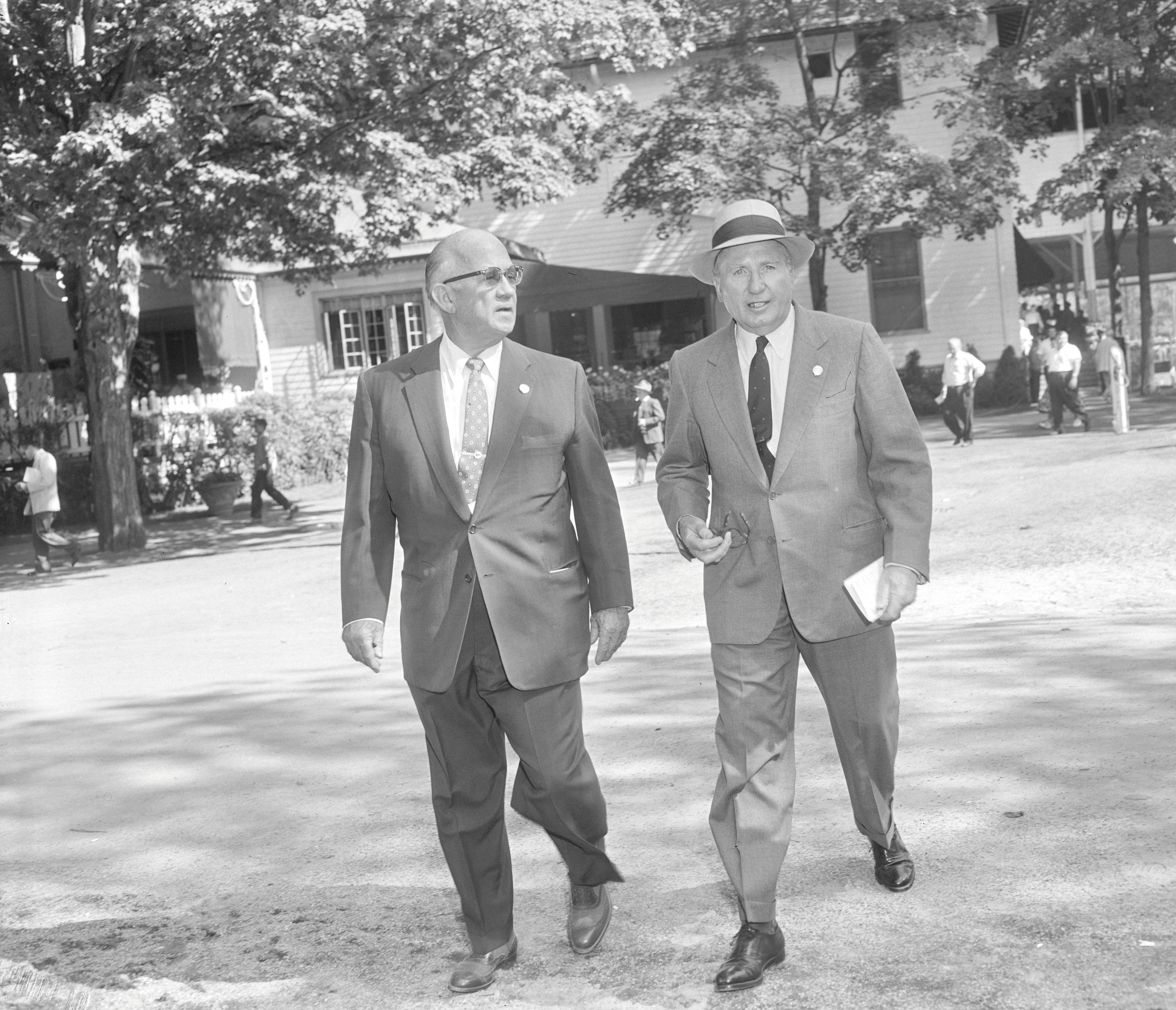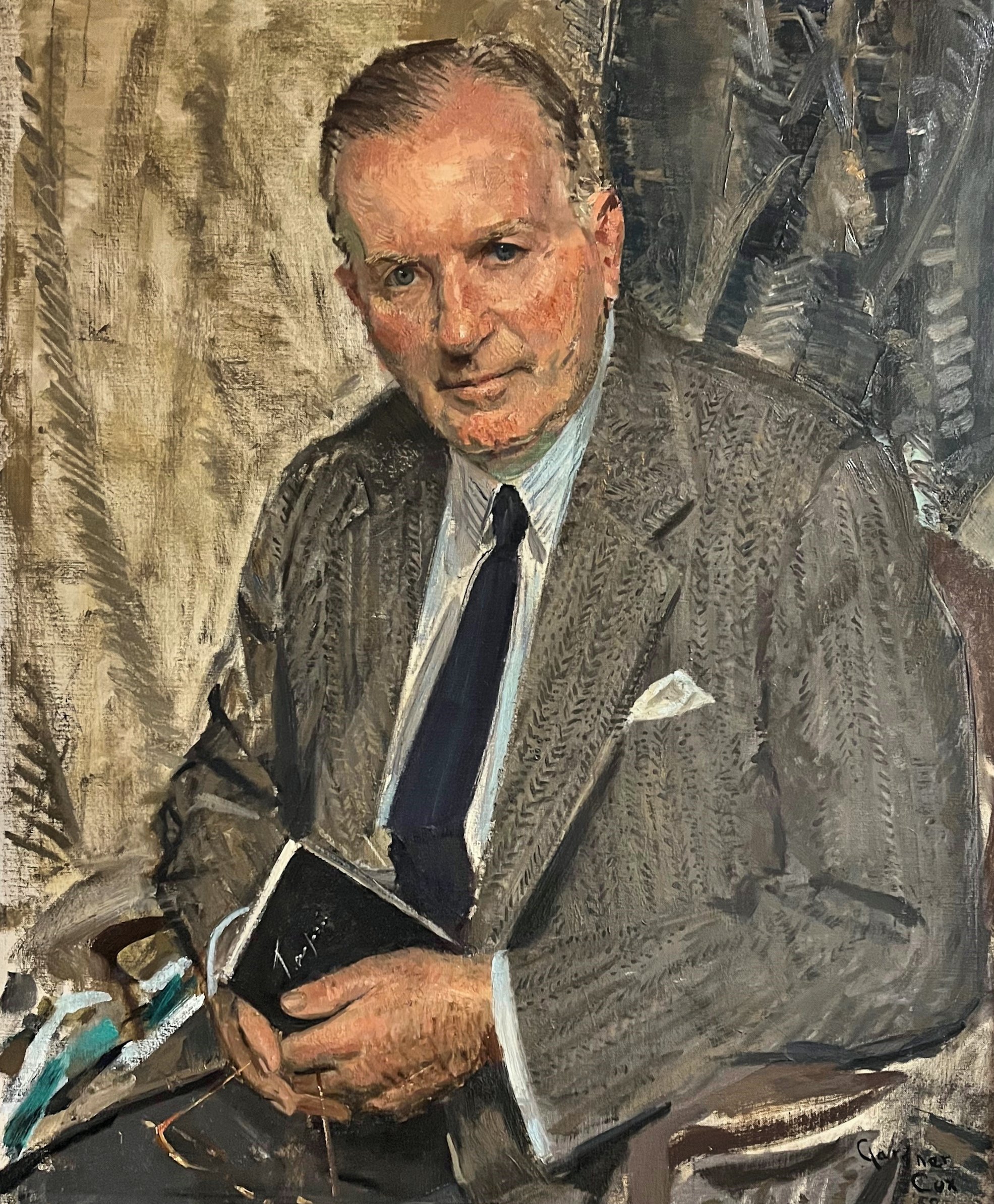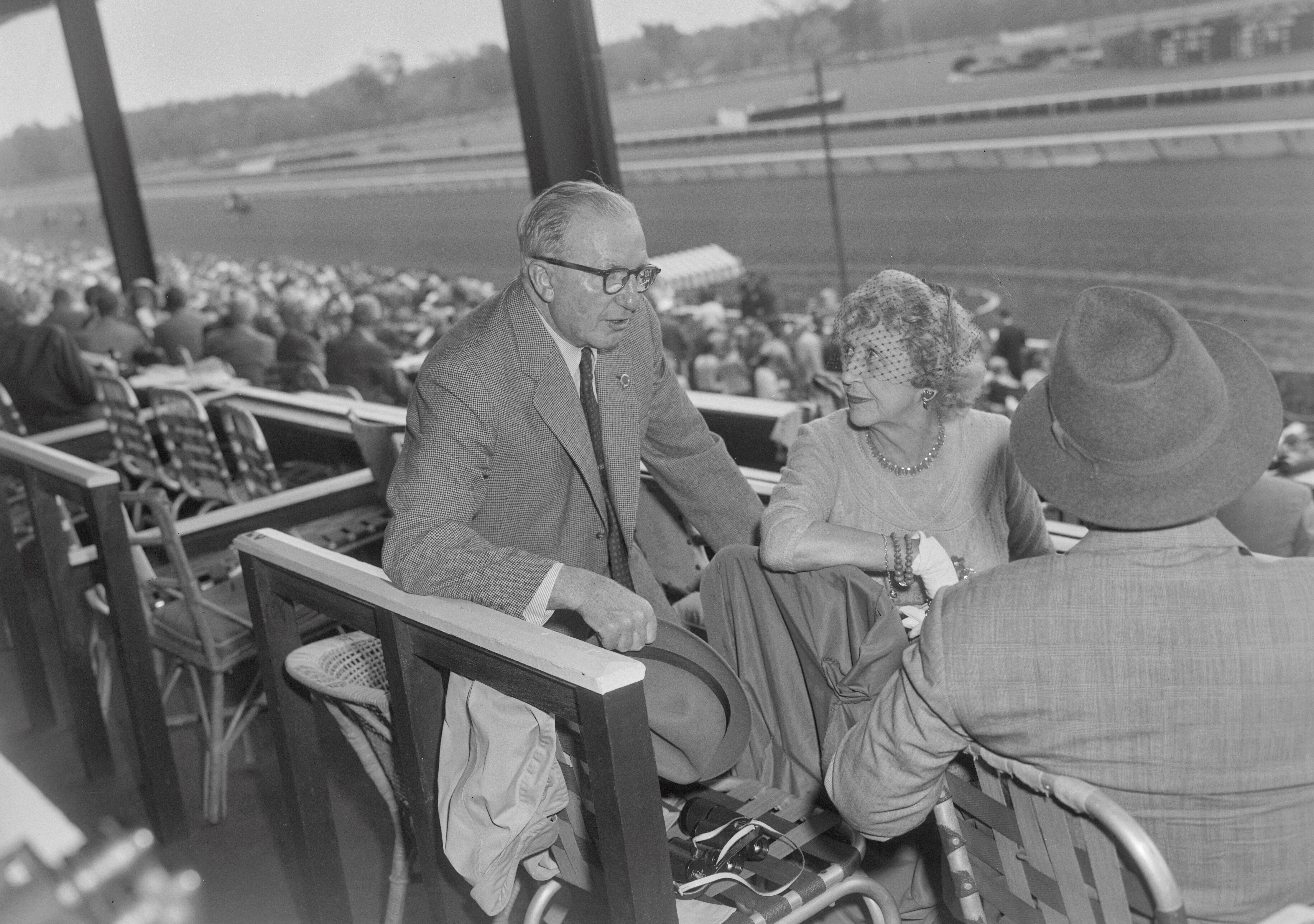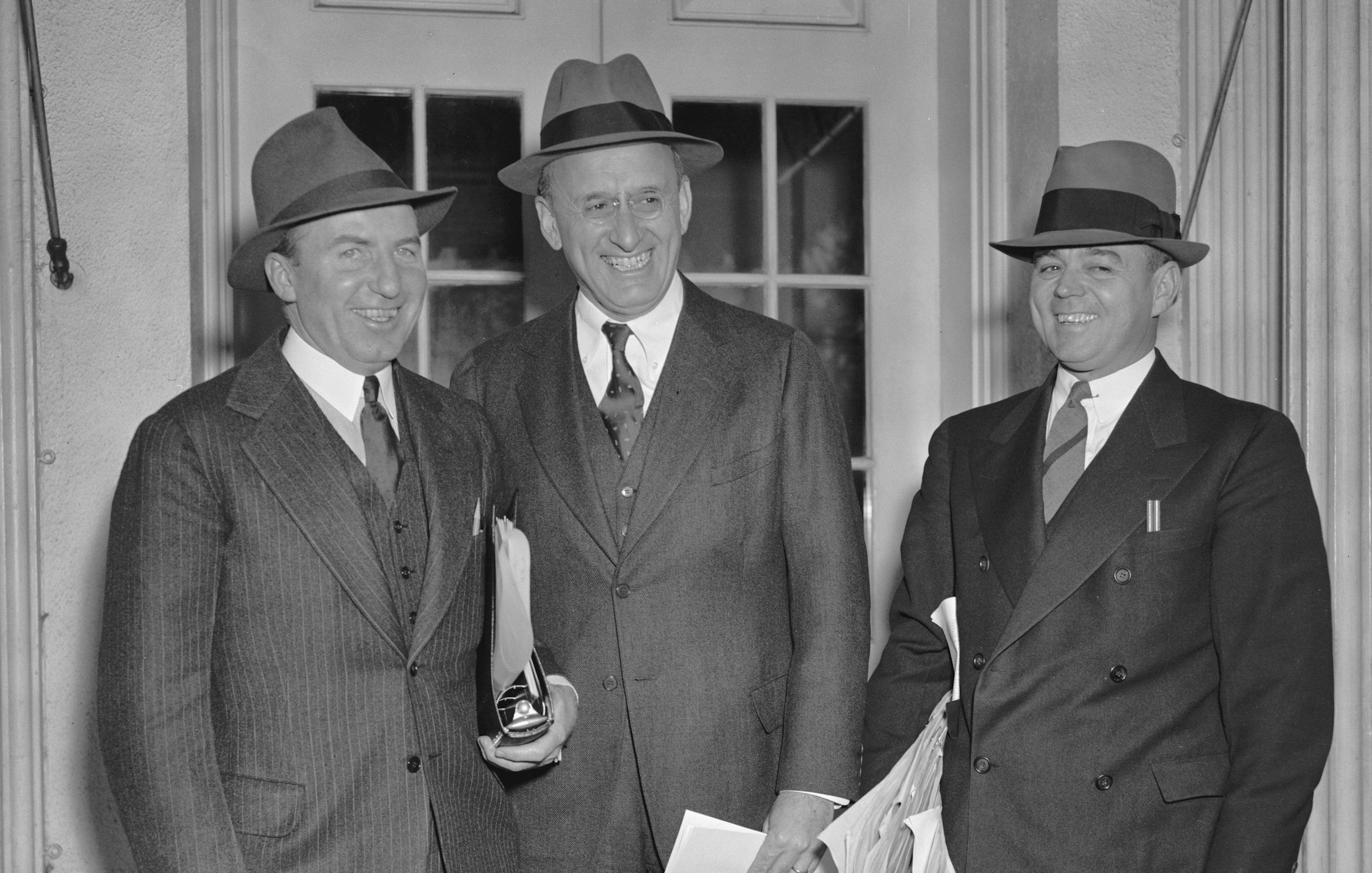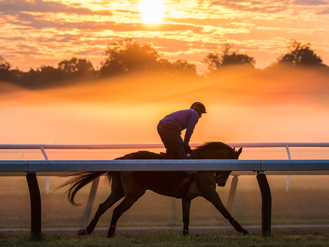John W. Hanes II
“Johnny Hanes is unquestionably the most beloved powerful man or the most powerful beloved man that any of us is ever likely to know.”

2023
April 24, 1892, Winston-Salem, North Carolina
Dec. 24, 1987, Millbrook, New York
Biography
“Johnny Hanes is unquestionably the most beloved powerful man or the most powerful beloved man that any of us is ever likely to know.”
The occasion of that accolade was John Wesley Hanes II being celebrated as honor guest at the Thoroughbred Club of America’s annual Testimonial Dinner in 1983. The heartfelt tribute was written by the worldly Kentucky horseman and sportsman Stanley D. Petter, Jr., whose professional vantage points of Hanes included New York racing, Kentucky sales, and service on behalf of the National Museum of Racing and Hall of Fame.
Petter placed his testimonial in part within context of having walked with Hanes from the parking lot of Belmont Park to the box section of that iconic New York track.
“Everyone from the car parker to the program seller to members of The Jockey Club will crowd around to get near him, not because they sense his star appeal (which he genuinely has), but because they are intuitively drawn by his deep concern for his fellow man,” Petter wrote. “He is Everyman: the patrician with the common touch, the Common Man of noble ways.”
The timing of that Testimonial Dinner on the night of Nov. 13, 1983, allowed the racing world nearly three decades to appreciate the role Hanes had played in a pivotal chapter in New York racing. Hanes had been one of three musketeers of a sort who had come to the rescue of New York racing. And rescue is not too strong a word, for the status of the city’s and state’s racing had diminished to the point that a powerful racing commission chairman had vowed that government would take charge if the industry itself failed to act.
Since post-Civil War eras, New York racing had emerged as the most influential circuit of the United States’ first national sport. Sportsmen such as Leonard Jerome, August Belmont I and II, Joseph E. Widener, and Alfred Vanderbilt had peopled a history of achievement which had earned and maintained pride of place. Indeed, when New York racing had been shut down by overwrought anti-betting morality early in the 20th century, the thoroughbred sport/business of the entire nation had staggered. Such was the importance of the Gotham Turf scene.
By 1953, however, New York racing was in decline, while the racing qualities of Chicago and New Jersey seemed emergent. Ashley T. Cole, chairman of the New York Racing Commission, was the spokesman of state government’s threat to step in if industry leaders could not correct the decline. Fittingly, although perhaps ironically, that threat had one of its stark iterations during a dinner held by The Jockey Club in Saratoga.
Ogden Phipps was vice chairman of The Jockey Club under George D. Widener. Phipps’ name has been associated ever since with the rapid appointment of three combination sportsmen/breeders/captains of industry as a three-person committee. Hanes was one of those members and was joined by Capt. Harry Guggenheim and Christopher T. Chenery.
The three hunkered down to a working relationship, including many letters exchanged as well as personal meetings. Out of the chaos came a vision at once embracing a reduction in tracks countered by expansion of remaining facilities. The title organization New York Racing Association came to be associated with this tripartite effort, and, in a phrase, New York Racing reassumed its perch.
Hanes was born in Winston-Salem, North Carolina, in 1892. His father and an uncle were associates of the R. J. Reynolds tobacco empire, which was sold into the American Tobacco Trust. As Hanes once described it to The BloodHorse, “When Teddy Roosevelt began his trust busting in 1911, the Supreme Court decrees came down separating all the tobacco companies and oil companies.” Hanes’ family elected to take stock in Reynolds, but soon “hocked that stock and borrowed money,” in order to build up Hanes Hosiery Co., which his father had founded in 1903.
Hanes attended Yale and launched into a business career which in time found him senior partner of Charles Barney and Company and a member of some 30 other boards. In 1938, Hanes was asked to become a member of the Securities and Exchange Commission, upon which he sold his seat on the exchange. He later moved to Washington, D.C., to take a post in the Treasury Department, which led to his becoming Under Secretary of the Treasury. Hanes’ professional vs. personal standards found him leaving that post because of disappointment in Franklin Roosevelt’s decision to break precedent by running for a third term as President.
Back in private business, Hanes succeeded in a milieu which later would make him a prime candidate for the New York racing economic puzzle. In what he once said was “the most complicated thing I ever got into,” he was engaged to reorganize and revitalize William Randolph Hearst’s financial empire of some 90 companies. This led to Hanes being recruited to organize the merger of Olin Industries and Mathieson Chemicals. Olin Industries and Mathieson Chemical merged in 1954 to form the Olin Mathieson Chemical Corporation. The new company had 35,000 employees, 46 domestic plans, and 17 foreign plants.
Hanes’ other qualifications to help lead New York racing began tangentially in his playing polo as a young man, and his second wife, Hope Yandell Hanes of the Central Kentucky town of Danville, had owned horses since the 1930s. George D. Widener asked Hanes to become a director of Belmont Park in 1949, during the time Mr. and Mrs. Hanes were assembling a broodmare band. Also, in 1952, Hanes entered into a partnership with Spendthrift Farm owner Leslie Combs II involving stallion syndication as well as breeding and selling high quality yearlings.
Hanes, Guggengheim, and Chenery poured similar sporting and business acumen into the New York racing problem. They came up with the idea of selling two New York City tracks, Jamaica and Empire City, in order to shore up the position of Aqueduct and Belmont. All the while, they were determined to maintain and foster the historic racing at upstate Saratoga as well.
Looking back nearly 30 years during the Thoroughbred Club Testimonial Dinner, Hanes told his audience: “Many in the horse world were skeptical. No one dreamed that we could borrow over $50 million to finance the purchases from the stockholders” of all those racetracks. One factor which made it politically palatable, Hanes stressed, was that the committee plan was that the gambling franchise would “never be given to individuals.” Instead, it would rest in the hands of “a stock company organized under the same business laws as … General Electric, U.S. Steel, American Telephone or any other corporation in New York State.”
The stock was to be held by 20 trustees who “would purchase it for $5 a share and … no dividends, no emoluments, no rewards, would be forthcoming. We said here was a rare example of government and private enterprise joining hands in a corporation from which only the citizens of New York State would receive all the profit and benefit.”
Aqueduct was first to be rebuilt by the resulting New York Racing Association (NYRA) and reopened, grandly hailed by the public as “The Big A,” in 1959. Before Belmont Park could be rebuilt along a timeline, it had deteriorated enough that it was condemned in 1962, so New York City had only one track for a few years. Belmont Park’s own grand reopening came in time for the 100th Belmont Stakes in 1968. As Hanes said in his address, “The racetrack attendance and the income to New York State jumped by leaps and bounds.”
Hanes was the first chairman of NYRA and served as a trustee until 1973. His individual career in the horse business continued apace. His partnership with Combs found them breeding and selling Idun for a record price for a yearling filly. Idun brought $63,000 at Keeneland in 1956 and became a two-time champion filly. The partnership bred 14 stakes winners before its conclusion in 1964, and Hanes bred five stakes winners individually.
Service was always a key part of Hanes’ many roles in racing. In the 1970s, he became an officer in a hastily organized group which purchased the revered Hialeah Park in Florida when its existence was threatened. In addition to the Thoroughbred Club honor, Hanes was voted other important awards by varied constituencies of the sport. He was named an Exemplar of Racing by the National Museum of Racing, of which he served as president, as well as being voted Man of the Year by the Jockeys' Guild. The National Steeplechase Association, of which he was also president, voted Hanes its F. Ambrose Clark Award
Hanes was 95 when he passed away in 1987. A Pillar of the Turf he was, indeed.
Media

